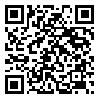Volume 22, Issue 1 (Mar-Apr 2014)
JSSU 2014, 22(1): 880-891 |
Back to browse issues page
Download citation:
BibTeX | RIS | EndNote | Medlars | ProCite | Reference Manager | RefWorks
Send citation to:



BibTeX | RIS | EndNote | Medlars | ProCite | Reference Manager | RefWorks
Send citation to:
Mirhosseini M, Esfarjani F, Marandi M, Khalilzadeh S, Mirhosseini H. The Effect of Yoga Exercise on Parameters of Type II Diabetes. JSSU 2014; 22 (1) :880-891
URL: http://jssu.ssu.ac.ir/article-1-2618-en.html
URL: http://jssu.ssu.ac.ir/article-1-2618-en.html
Abstract: (11078 Views)
Introduction: Progressive natural history and complications of diabetes emphasize the need to adopt appropriate therapeutic strategies. Therefore, this study aimed to investigate the effect of yoga on body composition, blood glucose, HbA1c, Cutaneous fat percentage, and VO2max of type 2 diabetic patients.
Methods: In this quasi-experimental study, 30 men with mean age of 49/30±5/40 years in Yazd were purposefully selected via a convenience sampling and divided into two groups of experimental and control(15 each). Experimental group began the yoga exercises for 12 weeks and 3 sessions per week for 60 minutes, whereas the control group did not receive any regular physical activity. In this study, several variables were measured before and after 12 weeks in both groups including fasting blood sugar (fbs),
2 hour glucose (IIh.pp), glycosylated hemoglobin (HbA1c), aerobic power (VO2max) and Cutaneous fat percentage. In order to measure fbs, IIh.pp, HbA1c, 10 cc of fasting blood and 10 cc of blood 2 hours after breakfast were collected from the subjects in Yazd Diabetes Center. Racopurt test was used to measure VO2max and Lange caliper was applied to measure Cutaneous fat percentage. Moreover, in order to compare the changes between the two groups, mean differences were analyzed using T-test.
Results: No significant difference was observed in levels of fbs, IIh.pp, HbA1c, VO2max and Cutaneous fat percentage in the experimental group compared with the control group (p< 0/05).
Conclusion: Yoga exercises (for 12 weeks) can be effective on controlling the blood glucose in type 2 diabetic patients.
Type of Study: Original article |
Subject:
Exercise Physiology
Received: 2013/11/20 | Accepted: 2013/12/24 | Published: 2014/03/31
Received: 2013/11/20 | Accepted: 2013/12/24 | Published: 2014/03/31
Send email to the article author
| Rights and permissions | |
 |
This work is licensed under a Creative Commons Attribution-NonCommercial 4.0 International License. |





